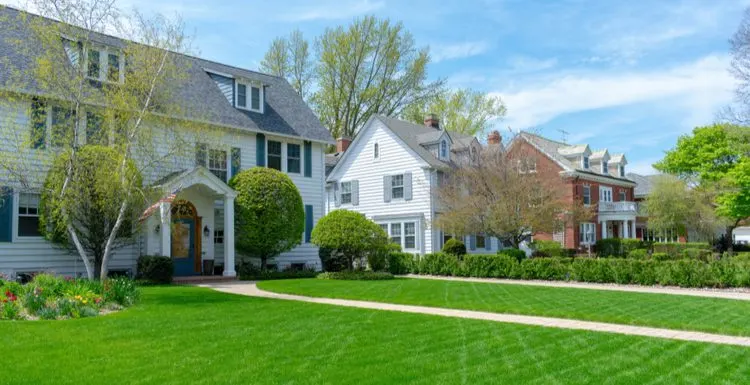Whether you’re selling your home, getting ready to renovate, or just indulging your curiosity, it’s good to know when your home was built.
Luckily, there are some easy ways to pinpoint the exact age of your home; we’ll cover each one in detail below.
In A Nutshell
The fastest and easiest way to find out the exact build date of your home is to refer to your ownership documents. These let you see the entire deed history, from the beginning until today.
Even if you have inspection paperwork, that lets you know the history of ownership behind your home, including previous owners and the exact year of construction.
But what happens if you don’t have your owner’s documents handy? There are a few other unique ways to tell the age of your home.
How To Check When Was My House Built?
1. Visit Your Local County Assessor

If you need a hard copy of your house’s history and information, one of the best places to look is the tax records.
If these reports are up-to-date and accurate, they’ll have the names of all the previous owners of your property and the yearly tax assessments.
You can also visit your local county clerk’s office. Here, you can get documents like the deed and lists of property transactions.
2. Hire an Inspector
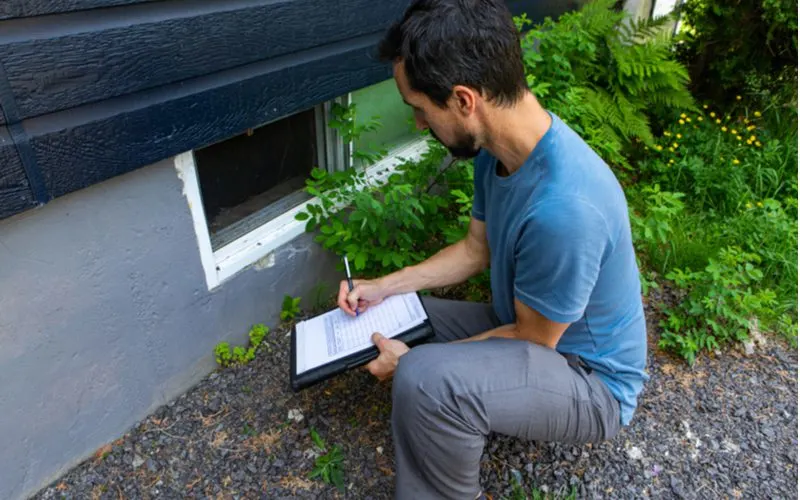
Valmedia/Shutterstock
Professionals like building and architectural inspectors are fantastic resources of knowledge when it comes to buildings and structures.
And their knowledge doesn’t stop at the structure. They’re trained to dig through documents and find the age, any modification history, and whether or not it complies with the building code.
You can also check your address with your local inspector to see if any past building permits for your location exist. This information lets you know if previous owners did any work or renovations.
3. Check Your Home’s Hardware
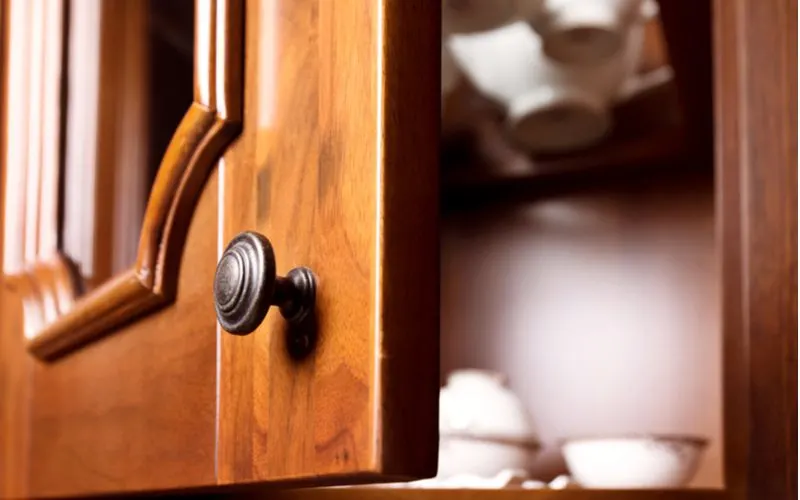
Zhu Difeng/Shutterstock
While hiring an inspector will give you helpful information, it’s also expensive. To reduce costs, there are some simple things that you can look at to determine the generalized time frame of your home’s build year.
Hardware and materials evolve over the years, so things like nails, outlets, and even toilets can have some telltale signs of the age of your home.
So what should you look for?
- Nails: If you look at the nails throughout your home and notice that they are square and rougher-looking nails, then the construction of your home was before 1890. After that, nails switched over to the wider, rounded design we know today.
- Outlets: If your outlets have only two slots of the same size, you have non-polarized outlets and an older home. If the outlets have two slots of different sizes, your home’s electrical system is polarized, as was the standard in the mid-20th century. If your receptacles have slits with a rounded opening, your outlet is grounded and polarized, making it the most modern setup.
- Flooring: Like all other trends, material and design trends for homes change through the years. Houses built between 1890 and the early 20th century used linoleum in areas like passages and hallways until its popularity peaked in the 1920s and continued through the 1960s.
- Original Structures: If your home has structures from the original construction, you can inspect them to see the manufacture date. Typically, companies will stamp the year of production on the lid or tank of bathroom products like toilets.
4. Take a Walk

Robert Crum/Shutterstock
Your home’s utility meters can have some good information to help easily determine their age. Step outside and find your home’s meter reader. On each device, you can generally find a date stamp.
5. Examine the Architecture
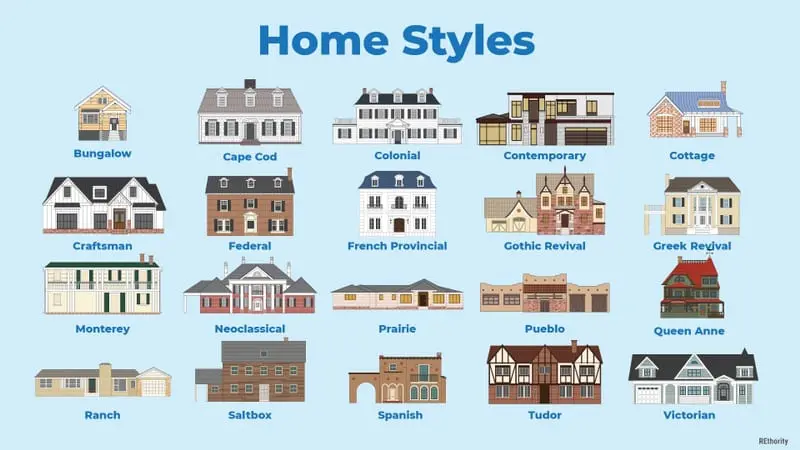
One of the best ways to get a general idea of the construction timeframe is by analyzing your home’s architecture.
The visual character of a home is typically a reflection of the era’s design and style trends. Some examples of home styles that can help you pinpoint age are:
- Classical Style: These symmetrical homes typically feature columns, porches, and large windows and doors. Construction on these homes took place between the years 1780 and 1860.
- Victorian – This multi-level, unique, and steep-roofed style is well known for its iconic style. Technological advances at the time made these homes common in the years 1840–1900. These homes include specific styles like gothic revival, Italianate, and Queen Anne.
- Gilded Age: These dramatic, marbled mansions were the best way for post-Civil War rich folk to show off their wealth in the late 1800s through the 1920s. Some well-known examples of these homes are the Darlington in New Jersey and the Rockefeller Estate.
- Early 20th Century: This category has many different subcategories that reflect different regions. These homes are commonly a bit smaller and more economical. Some popular examples of this style are Dutch colonial, bungalow, and Tudor revival homes.
- Post-War: These homes sport a more cookie-cutter design to give cost-conscious options to returning soldiers. These houses, constructed between 1945 and 1980, featured small living spaces and windows with more living amenities. Ranches or Cape Cod styles are just a few examples of post-war-style homes.
- Neo or Neo-Traditional: These houses take all the technological and material advances to create more custom homes, featuring faux shutters, awnings, and complex roofing. This style came about in 1965 and is still a popular choice for homes and retail buildings.
6. Check Your Basement or Attic
If you live in an old home, you might find the original construction date printed on the cement walls in your basement. Some old homes that use brick will also have the construction date stamped on a corner of the bricks.
You might come across other construction materials with stamped dates, including old plumbing pipes in your basement or crawlspace or wood support beams in your attic. Some insulation material might also have a manufacturing date stamped on it.
7. Look Up Your Home on Real Estate Websites

Godshutter/Shutterstock
Have you ever typed your address into a search engine? The top results are usually from real estate websites.
These sites display public information about every home in the U.S. This information typically includes the latest sale data, the property tax rate, and the construction date.
Note that this information isn’t always accurate, but if you purchased your home recently, it’s likely that these sites will have up-to-date information about your property.
Here are a few sites you can try; all you have to do is enter your address in the search box:
- Zillow
- Realtor
- Redfin
- Trulia
- Movoto
If you can’t find the information you need on these websites, try contacting the real estate agency that orchestrated the sale of your home. The agent who listed your home should have records that include the construction date.
8. Check Your Home Insurance Policy

Shutter_M/Shutterstock
If you are one of the 95% of homeowners who carry a home insurance policy, this document can be a quick and easy way to find your home’s construction date.
Your home insurance policy should have a page with some details about the property insured, including your address and the date of construction.
If you can’t locate your home insurance policy, reach out to your insurer to get a new copy or check your insurer’s website or app since many insurance companies offer a digital version of these important documents.
9. Get Help From Your Local Historical Society
Historical and preservation societies are non-profit organizations dedicated to researching and preserving the history of a town or area. These organizations typically collect documents, maintain archives, and even preserve historical buildings.
You can find out more about your local historical society by doing a quick online search or reaching out to local museums or libraries. Volunteers from your local historical society will help you navigate resources like old sales records, tax documents, photographs, or cadastral maps.
It’s a fun way to learn more about your area, and you might be able to pinpoint the exact construction date of your home by comparing different maps and other resources.
10. Talk to Your Neighbors

Rawpixel.com/Shutterstock
Do you have any elderly neighbors? Approach them and ask a few questions.
They might remember seeing construction crews building your home and might have other interesting information about your home.
Plus, it’s a great way to start a conversation and get to know your neighbors better.
Even if they don’t know the answer, they might be able to put you in touch with the previous owners, who will have more information about your home’s construction date and any additions made over the years.
Other Things You Need To Consider
Even though there are several ways you can figure out when your home was built, the nuanced differences between every home make pinpointing the age of some homes difficult.
Why should you know when your house was built?

Ursula Page/Shutterstock
There are many reasons someone would want to know the building era of your home. One is if you are selling your home.
You or your realtor will likely have to answer questions about the history of the house. Your disclosures can also affect the price of your home, so it’s best practice to do research.
Another reason to know your house’s history is if you want to conduct renovations. Before taking on any construction project, you must be aware of the architectural history.
Depending on the age of your home, it can depend on the type of work you can do, how you can accomplish that work, and what tools or help you’ll need.
The age of your home is also essential information if you are looking to buy homeowners insurance. Providers have to account for potential plumbing or electrical issues with older homes, so newer homes are usually cheaper to insure.
Even just general curiosity about your home’s history can turn up some fantastic stories. Researching the previous owners can open you up to their experiences in the house you now live in.
When is a house considered old?
Of course, the definition of an “old house” depends on the person and their preference.
Generally speaking, if a house is 50 years old or more, it’s considered old. Older buildings tend to have a lot of unique characteristics that can enhance their charm.
Are old homes safe?
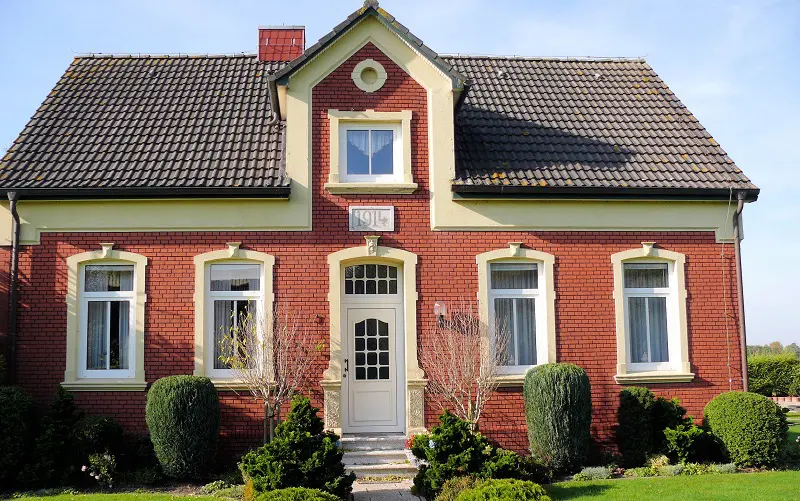
Image Source: pixy.org
Even though old homes have a unique beauty to them, it’s essential to conduct a proper inspection in case of any age-related issues.
One expensive problem with older structures is that they commonly have years of wear on the foundation. Other factors contributing to a weakening foundation are seismic activity, soil, and surrounding foliage.
Another factor that can change with time is the viability of building materials. Older homes can potentially have harmful materials, like asbestos and lead paint, that are now known to cause serious health problems.
If your home has any materials like this, it’s imperative to hire professionals to resolve the issue.
A sneaky problem that is common in older homes is poor air quality. Gases like carbon monoxide and radon can be present in old buildings and can be hard to catch due to the lack of color or odor.
These gases can not only impair the lungs but can also slowly break down the foundation of a home.
Due to different materials and techniques, some of the electrical wiring and plumbing can create problems for owners of old homes.
Both electric and plumbing are expensive issues, and they each introduce their own hazards. Faulty plumbing can encourage mold growth, and old wiring can start fires.
How can you tell if a house is built well?
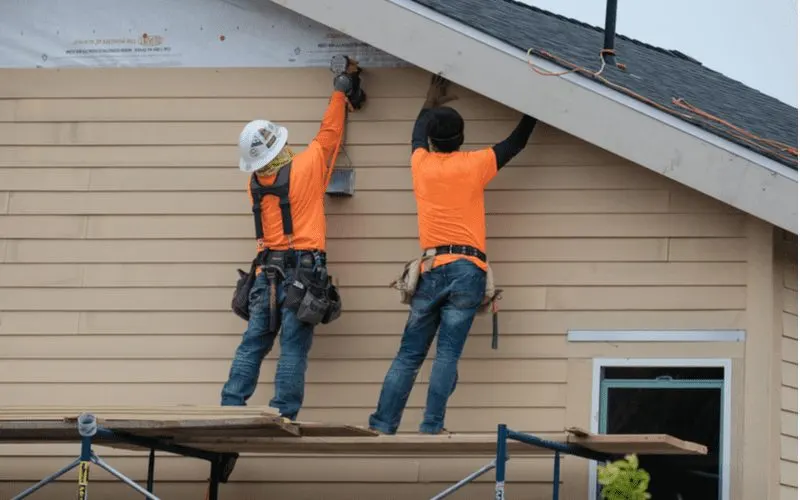
Mediaandrew/Shutterstock
While it is best to get the opinion of professionals, there are a few things that you can look for to assess the quality of the house.
If the foundation or walls have severe cracks, it’s usually not a good sign. While it’s easy to fix minor nicks, dents, and holes, large, floor-to-ceiling cracks are a red flag.
It’s essential to look at the structural elements of a home to determine if it is a quality build. So pay close attention to the roof, electrical wiring, and pipes. Corners can also be an area that captures moisture and can cause mold.
Can you trace your home’s history for free?
There are a few free options when it comes to reviewing the history of your home. Aside from going into your town’s local offices, you can access websites like Trace My House to conduct research.
Here, you can enter the information you already have to locate more records, including census reports and liens.
Another popular website is FamilySearch.org. This site constantly has updates on deeds and historical records that are available to the public.
Even though these are great options, it could be a time-saver to locate your local archive office and get as much information from the public record as you can.
Final Thoughts
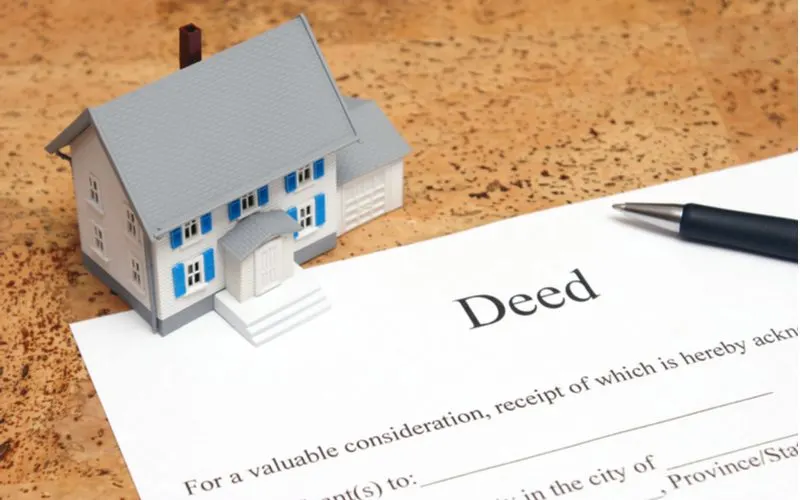
Matt Benoit/Shuterstock
This is a great question to ask. Whether you are interested in your home’s history for personal or business reasons, it’s information that is useful to learn.
By doing a quick online search or making a trip to your area’s public records offices to determine when your house was built, you can quickly identify some essential information for your dwelling space.
With your home’s age affecting so many things like insurance and renovation costs and even its livability, it’s worth a few minutes of your time to learn something new about your home.
You could even uncover amazing stories about the past residents or the land’s history. It’s up to you to find out.

